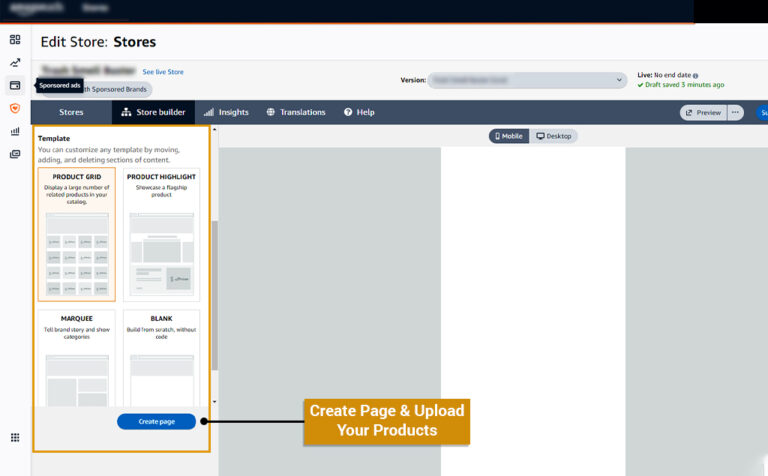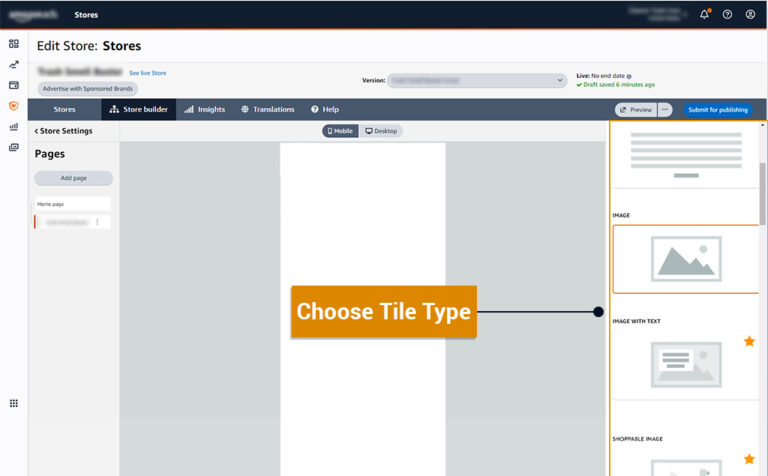With thousands of sellers and a massive customer base, Amazon has been the most popular eCommerce platform among retailers and buyers. However, with new sellers entering this marketplace, the competition is getting tougher with each passing day. It is vital to think over the conventional techniques and utilise the power of extraordinary features that amazon offers to stay on the top and get the most out of this potential platform.
You must have heard, implemented, and benefited from enhanced brand content. One of the similar ways to reach greater positions and give an immersive visual experience to your customers is through Amazon storefront design.
So, now you must be wondering how to get started with Amazon storefront creation and management. Don’t worry; we have got your back. The blog deals with detailed steps to creating Amazon storefront and Amazon store management services.
Table of Contents
ToggleWhy is Amazon storefront creation and management essential?
Amazon Storefront is a simple drag-and-drop product that allows the creation of multi-page stores to display value propositions and products on Amazon. With these customisable pages, one can showcase a single or group of items, including videos, texts, and other types of content. Amazon Store surges the buyers’ experience by:
- Offering an enhanced mobile and desktop experience
- Leveraging both external and internal sources of traffic
- Boosting organic ranking on amazon search engine
- Introducing the brand to newer audiences and promoting products to pre existing customers
Are you Eligible for Creating an Amazon Storefront?
Enrolment in the Amazon Brand Registry program is essential for Amazon storefront creation and management. The entire process of setting up a store is easy and free for sellers, vendors, and agencies.
How to cCreate Amazon Storefront Design?
Embark on the journey of Amazon storefront creation and management with these steps.
Step 1: Sign Up for a Professional Seller Account
The first step towards Amazon storefront creation and management is signing up for a professional amazon seller account. You need to provide basic details, including name, business contact details, email address, password, and payment information. Along with this information, amazon asks for your credit card details to charge the monthly fee of $39.99. Note that you must have the US back account number for payment.
Step 2: Register with Amazon Brand Registry
Once you get the approval for a professional selling account, the next step is applying for Amazon Brand Registry Program (ABR). The Amazon Brand Registry program provides various tools to improve the brand on Amazon, including enhanced advertising and marketing features, access to restricted selling categories, and professional presentations.
Step 3: Start Designing the Store
You can start creating your store as soon as the brand is registered with Amazon Brand Registry. For this, you can choose either way:
- Log in to seller central > Stores > Manage Stores
- Ad Console > Stores > Create Store

Step 4: Build Home Page
The home page is the first page customers will see on visiting the store. Creating a home page requires:
- Brand Display Name & Logo: You need to write your brand name and upload the logo with high quality.
- Page Meta Description: Make your meta description informative and catchy. It is a vital part of the store as it helps rank your amazon store and, at the same time, gives visitors a preview of your products and brands.
- Templates: Product highlight, product grid, and marquee are some templates that amazon provides so that you can creatively narrate your brand’s story, highlight your best-selling products or display all products altogether in one grid. Moreover, you can even start from scratch by choosing a blank page template.

Step 5: Create Additional Pages
After building the home page, it is time to create additional pages depending on the discount, deals, best-selling products, catalogue categories and more. It is important to note that you design pages in such a way that navigation within the page or to other pages is easy so that the visitors can easily get what they are exactly looking for without investing time and effort.
Step 6: Addition of Content Tile to Every Page
Set the proper hierarchy of pages and then add content tiles to these pages. Content tiles include images, videos, galleries, titles, product grids, and navigation.

Step 7: Upload Your Products
Once the design layout of additional pages is ready, you can add the product by assigning Amazon Stand Identification Number (ASIN to every product. You just need to copy-paste the respective ASIN.
Step 8: Check the Preview and Submit
You can click on the store preview option to check how your store will appear on desktop and mobile. Thoroughly check spelling mistakes, image or branding inconsistencies, grammatical errors, content titles, product images and navigation issues. Once done, submit the store page to Amazon for review. The store will get automatically published once the review is done.
How to manage an Amazon Brand Store?
Amazon understands the need for continuous store optimisation and thus allows sellers to upgrade and edit their store pages to maximise their chance of success.
Amazon brand store management services include:
- Auditing the store frequently and taking required actions to drive brand awareness and sales.
- Working on design and layout to offer a top-notch user experience.
- Showcasing the products and brand in a way that compels visitors to take action.
- Optimising your product subcategory and category classification.
- Creating compelling though SEO-optimised product descriptions
- Continuously researching new trends, monitoring and updating the product data when required.
Due to time constraints, many sellers do not pay heed to Amazon store management and land with poor sales and revenue. HRL Infotechs, the top storefront consultancy, has got your back! We have a dedicated team of professionals who can help you manage your storefront efficiently. They conduct in-depth research about trends and competitor stores to create an optimisation strategy that makes you stand out from the crowd and enjoy better sales.





